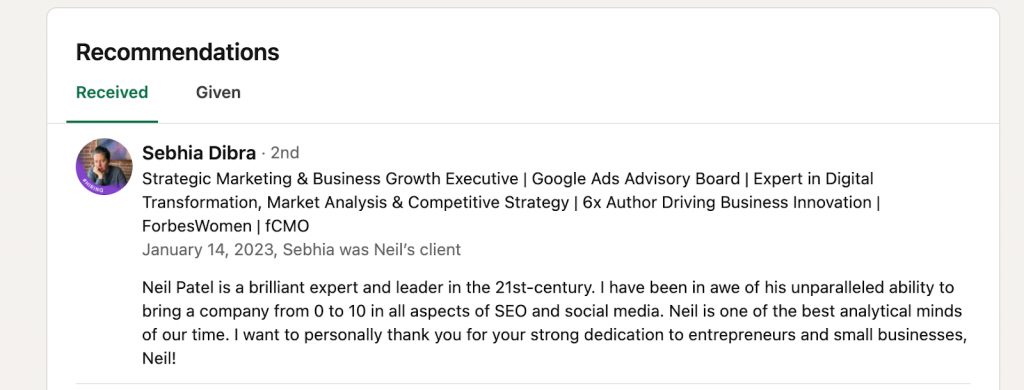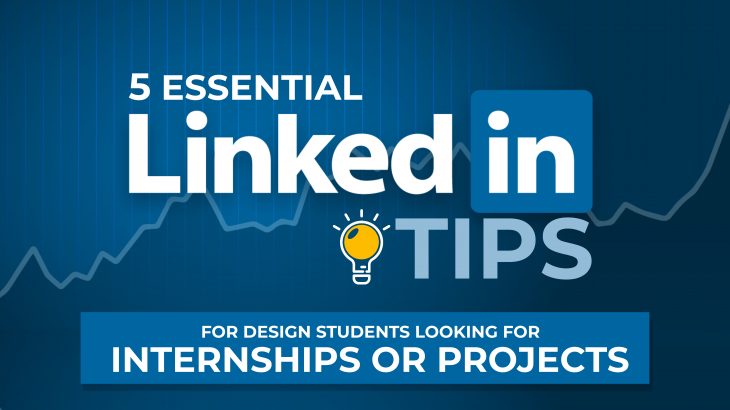In today’s digital age, social media isn’t just for selfies or memes—it’s a powerful tool for design students to showcase their creativity, connect with industry professionals, and discover opportunities. Platforms like Instagram, Behance, and Dribbble help you display your visual work, but LinkedIn stands out as the professional hub where recruiters, mentors, and collaborators actively look for talent.
Unlike other platforms, LinkedIn allows you to tell your story, demonstrate your skills, and build meaningful professional relationships. A well-crafted profile can open doors to internships, freelance projects, and even full-time roles—sometimes more effectively than your portfolio alone.
In this blog, we’ll explore practical LinkedIn tips to help you stand out, showcase your work, and start getting noticed by industry professionals.
- Headline that hooks
Your LinkedIn headline is one of the first things people notice—it’s like your digital handshake. Many design students simply write “Design Student at XYZ College,” but that doesn’t capture their personality, skills, or aspirations. A strong headline communicates who you are, what you do, and what opportunities you’re open to—all in a few words.
Example:
“UX Design Student | Passionate About Human-Centred Interfaces | Open to Internships”

This headline immediately communicates your role, focus, and availability, while helping you appear in relevant searches. Avoid vague terms like “Creative Student” or “Aspiring Designer.” Instead, think of your headline as a mini-introduction that makes people stop scrolling and notice you. Your LinkedIn headline appears everywhere: in search results, comments, connection requests, and when people view your profile. That means it’s one of the most visible parts of your LinkedIn presence. Make it count.
- ‘About’ section that shines
The About section on LinkedIn is your chance to tell your story beyond your resume. It’s where you can show who you are as a designer, what drives your creativity, and what makes your approach unique. Many students fall into the trap of writing a generic bio filled with vague phrases, but recruiters and collaborators want to see personality, not buzzwords.
A strong About section highlights three elements: passion, experience, and goals. Start with what excites you about design, give a brief overview of projects or accomplishments, and focus on impact and learning. Finally, mention the opportunities open to you, such as internships, freelance work, or mentorship.
Write in the first person to keep the tone approachable and human, and don’t be afraid to let a little personality shine through.
“I’m passionate about sustainable fashion and handcrafted clothing. My projects, like the ‘Upcycled Collection,’ explore blending traditional techniques with modern design. I’m looking for internships where I can learn from experienced designers and contribute to innovative collections.”
This highlights passion, experience, and goals in a clear, approachable way.
- Feature your best projects
The Featured section on LinkedIn is the first place people can see what you’ve actually created. Think of it as a mini-portfolio right on your profile. As a design student, you can add:
- Links to your portfolio or Behance/Dribbble pages
- Images, videos, or PDFs of your projects
- Case studies that show your process and solutions
This section lets recruiters and collaborators see your skills and design thinking at a glance, rather than just reading about them. A strong Featured section can make your profile visually appealing and memorable.
- Highlight skills and build credibility
LinkedIn’s search algorithm depends on keywords. Skills and endorsements improve your visibility in searches. Use industry-specific terms, such as “Sustainable Fashion,” “UI/UX Design,” or “Brand Identity,” rather than generic words like “Creative” or “Design.” List both software and soft skills: Adobe Suite, Figma, Sketch, teamwork, ideation, etc. Recruiters searching for specific skills will find you faster.

In addition, recommendations add social proof. Ask mentors, professors, or clients to write a few lines about your work ethic, creativity, or collaboration skills. Even a couple of strong recommendations can make a big difference, giving recruiters confidence that you’re a capable and reliable designer.
- Be active and intentional
LinkedIn isn’t just about having a profile; it’s about being visible and engaged. Share your projects, insights, or reflections regularly. Comment thoughtfully on posts from professionals in your field; it shows interest and initiative.

When connecting with people, personalise your request instead of sending a blank invite. For example:
“Hi [Name], I loved your recent branding project for [Company]. I’m a graphic design student working on similar brand identity projects and would love to connect!”
Being active and intentional increases your chances of building meaningful connections and opportunities like internships, freelance projects, or mentorship.
If you’re an aspiring designer looking to turn your creativity into a professional career, ARCH offers the perfect platform to do so. With state-of-the-art studios, hands-on workshops, and industry-relevant curriculum across fashion, graphic, product, and interior design, ARCH empowers students to build strong portfolios and develop practical skills. The college also emphasises on professional readiness, helping students create standout LinkedIn profiles, showcase projects effectively, and connect with industry mentors just like we explored in this blog. At ARCH, you don’t just learn design; you learn how to get noticed, build opportunities, and launch your career.
